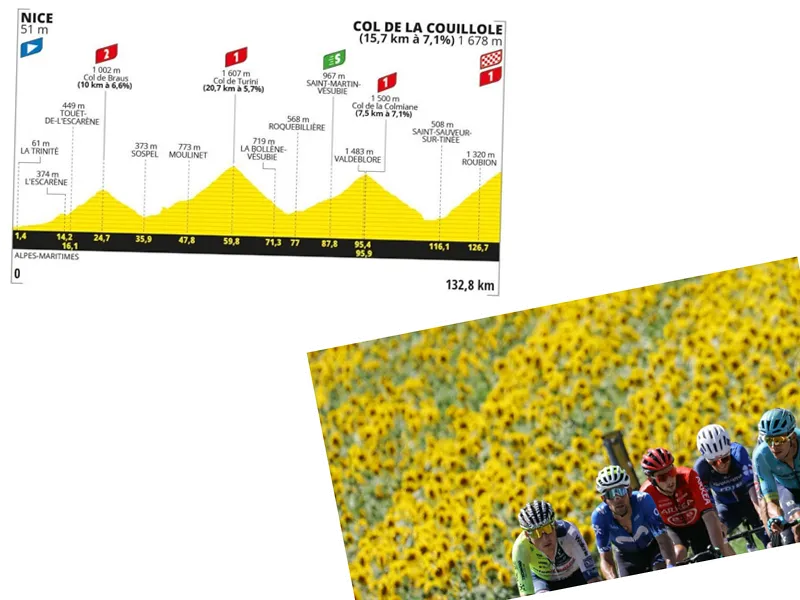The 20th stage of the 2024 Tour de France promises to be a thrilling final mountain showdown as riders tackle a challenging 132.8 km route from Nice to the Col de la Couillole. This stage features four significant climbs, beginning with the Col de Braus (10 km at 6.6%), followed by the Col de Turini (20.7 km at 5.7%), the Col de la Colmiane (7.5 km at 7.1%), and culminating in the steep ascent of the Col de la Couillole (15.7 km at 7.1%). With an elevation gain of 4,600 meters, this stage is not just a warm-up but a critical point for climbers looking to secure their positions in the general classification before the final time trial on Sunday. The race director, Thierry Gouvenou, emphasizes the high difficulty of this stage, which could lead to significant changes in standings.
As the peloton approaches this final mountain stage, climbers like Tadej Pogacar are eager to add to their victories, while Richard Carapaz and Romain Bardet are motivated to make their mark. The potential for breakaways and attacks is high, making this a must-watch event for cycling enthusiasts. Fans can catch the action live on France 3, Eurosport, or follow updates on Le Figaro.fr. Notably, the stage also passes the historic Chapelle des Pénitents Blancs in Beuil, adding a cultural touch to this intense athletic competition.
With the stage set for fierce competition, riders will be pushing their limits, and the expression "Screw the handle" captures the essence of the race as competitors accelerate towards their final chance for glory in the mountains of the Tour de France.
- This stage is a crucial part of the Tour, where the cumulative fatigue of three weeks of racing can lead to unexpected outcomes. The climbs, while not the steepest, are relentless, challenging even the best climbers. The dynamics of the race could shift dramatically, especially for those who are not strong time trialists, as they will need to maximize their performance in this stage to secure their overall standings.
- The Chapelle des Pénitents Blancs, a baroque-style chapel built in 1630, serves as a historical landmark along the route, highlighting the rich culture of the region. The restoration efforts have preserved its beauty, making it a point of interest for both spectators and participants.






